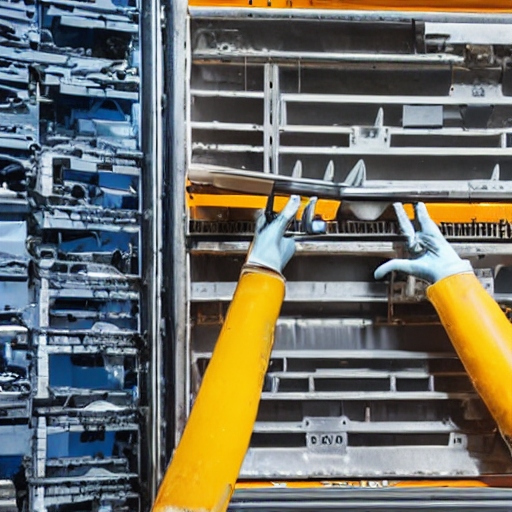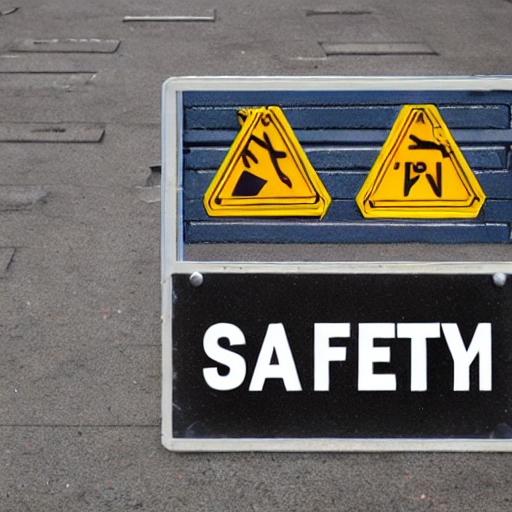Like anywhere else in the world, a number of variables can lead to safety system failures in Indian industry. To avoid similar situations in the future, it is critical to recognize and comprehend these aspects. It is important to understand that failures of safety systems result from the convergence of several causes rather than from a single cause. These can include defective equipment, poor application of safety procedures, and a lack of knowledge of safety rules and training. Consequently, it is critical that Indian firms take a comprehensive approach to addressing these complex issues, including through regular equipment maintenance, stringent adherence to safety regulations, and intensive safety training programs.
1) Lack of Safety Culture:
In some cases, there might be a notable absence of a strong safety culture within organizations. This lack of emphasis on safety can be attributed to various factors such as organizational negligence, inadequate training, or an overall disregard for safety protocols. When safety measures are not given the importance they deserve and fail to become an integral part of a company’s principles and daily operations, employees can easily overlook their significance. This oversight, in turn, increases the likelihood of potential hazards and risks. By failing to prioritize safety, employees may unwittingly put themselves and others in harm’s way, creating an unsafe work environment. Therefore, it is essential for organizations to recognize the critical role safety plays and actively work towards establishing a robust safety culture that permeates all levels of the company.


2) Inadequate Training:
Accidents resulting in injuries, property damage, and lost productivity can be caused by inadequate training of employees and management on safety rules and procedures. When employees and management are not properly trained on safety rules and procedures, they may lack vital knowledge and skills, putting themselves and others at risk. This can lead to incidents that can result in injuries, property damage, and a decrease in productivity. To ensure that staff members comprehend and follow safety procedures effectively, it is crucial for businesses to prioritize the implementation of appropriate training programs. By doing so, companies can actively reduce the possibility of mishaps and create a safer workplace environment for all employees, promoting overall well-being and productivity.
3) Inadequate Risk Assessment:
A larger chance of accidents or incidents occurring can arise from underestimating possible dangers as a result of incomplete risk assessments. This is because when risks are not thoroughly identified and assessed, necessary precautions may be overlooked, leaving individuals inside the business vulnerable to harm. It is vital, therefore, for effective safety practices to prioritize the health and safety of individuals by conducting careful and comprehensive risk assessments. By doing so, potential hazards can be identified and appropriate preventive measures can be implemented, ensuring a safer working environment for everyone involved. Consequently, the likelihood of accidents or incidents occurring is reduced, leading to increased productivity, efficiency, and overall well-being of the individuals working within the organization.


4) Resource Constraints: Certain businesses, such as those in the manufacturing or construction industries, often find themselves facing financial limitations compared to other industries. This lack of financial resources poses a significant challenge for these businesses when it comes to investing in modern and reliable safety systems, which are crucial for ensuring the well-being of their personnel. Without adequate funds, these companies struggle to replace outdated or subpar equipment with the necessary safety measures, which can have detrimental effects on the overall security and safety of their workforce. Consequently, these resource constraints directly impact various sectors’ ability to prioritize the protection and welfare of their employees, ultimately compromising the maintenance of a safe workplace environment.
5) Poor Maintenance Practices:
When routine maintenance is overlooked, the consequences can be severe. There is a high risk that the equipment and safety systems could encounter malfunctions or failures at the most critical moments, causing potential danger and disruption. In order to prevent such issues from occurring, it is crucial to prioritize regular maintenance and inspections. By consistently undertaking these necessary measures, potential problems can be identified and addressed promptly. This ensures that the safety systems function optimally, maintaining their effectiveness and reliability. Such proactive maintenance practices safeguard against unexpected breakdowns and minimize the risk of accidents or incidents. Furthermore, regular inspections enable early detection of any emerging issues, allowing for timely repairs or replacements before they escalate into larger, more costly problems.


6) Compliance Issues:
Failure to comply with safety regulations and standards, whether due to lack of awareness or deliberate non-compliance, can contribute to safety system failures, including equipment malfunctions and worker injuries. This lack of compliance can be attributed to factors such as inadequate training programs, a disregard for safety protocols, or a lack of understanding of the potential risks involved. Additionally, non-adherence to safety regulations jeopardizes the overall effectiveness of safety management systems, as it undermines the trust and credibility placed in such systems by stakeholders and regulatory bodies. This, in turn, increases the potential for accidents and hazards, posing a significant risk not only to workers but also to the general public.
7) Communication Gaps:
To ensure that safety information effectively reaches every level of the company, it is of utmost importance to establish clear and concise communication channels. In fact, the consequences of a lack of effective communication within the organization can be far-reaching and detrimental. Without proper communication protocols in place, there is a higher risk of miscommunication, which can lead to incorrect interpretations of safety measures and ultimately compromise the overall well-being and safety of everyone involved. As a result, it becomes imperative that all employees are consistently provided with accurate and up-to-date safety information. By doing so, potential misunderstandings can be minimized, and proactive measures can be taken to mitigate any potential risks that may arise.


8) Work Pressure and Fatigue:
Extended work hours and insufficient breaks can cause both fatigue and high job pressure, which in turn can have a significant negative impact on cognitive functions. Specifically, fatigue impairs one’s ability to concentrate and make sound judgments, while job pressure can lead to increased stress levels and decreased mental clarity. As a result, these factors not only increase the likelihood of distractions and errors in judgment but also raise the overall risk of mishaps and safety incidents in the workplace. Furthermore, it is important to note that the consequences of fatigue and high job pressure extend beyond safety concerns, as they also compromise employees’ overall work performance.
9) Regulatory Enforcement:
In many cases, companies often show a diminished inclination to prioritize ensuring that safety procedures are followed when confronted with a lack of fully enforced safety standards or when faced with inadequate regulatory oversight. This occurrence may arise due to a failure to properly enforce safety regulations or to grant regulatory agencies sufficient authority. Consequently, businesses commonly find themselves less compelled to prioritize safety. As a result, the pressure to prioritize safety is diminished when safety regulations are not adequately upheld or when regulatory agencies lack the authority necessary to demand strict adherence to safety standards.

In order to effectively address safety system failures, it is essential to have a solid, all-encompassing strategy in place. This strategy should not only include management commitment, but also active staff participation, proper training, regular maintenance, and strict adherence to regulatory standards. Creating a safe environment in industrial settings and preventing accidents heavily relies on fostering strong safety cultures and continuously striving for improvement in safety measures. By implementing this comprehensive approach, the risk of incidents occurring can be greatly minimized, ensuring the overall well-being and protection of everyone involved.
